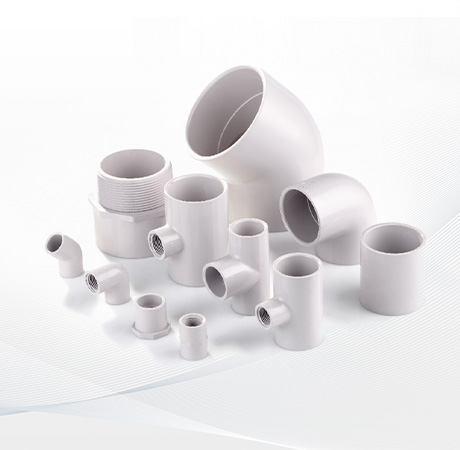At LESSO America, we know that a well-functioning plumbing system depends on more than just quality materials; it also depends on making the right choices from the start. PVC plumbing fittings offer durability, affordability, and ease of use, but selecting the right fittings for your specific setup is key to long-term performance. With different sizes, pressure ratings, and compatibility factors to consider, knowing what to look for can help you avoid unnecessary repairs or replacements down the road.

Before purchasing any PVC plumbing fittings, it's important to evaluate the system you're working with. Is it a residential or commercial application? Will the system carry drinking water, wastewater, or chemicals? These answers influence the size, material grade, and type of fittings you'll need.
We recommend beginning with a clear plan of your plumbing layout. Identify the locations where joints, bends, and changes in direction are required. This will help determine the number and types of fittings such as tees, elbows, couplings, or adapters—needed for the job.
PVC fittings come in a variety of sizes to match standard pipe diameters. Choosing the correct size is crucial for proper flow and sealing. At LESSO America, our PVC plumbing fittings are manufactured to meet precise tolerances, ensuring a snug fit with compatible pipes.
Make sure to measure the outer diameter of your PVC pipes and match it with the fitting's socket or thread dimensions. A tight and accurate fit prevents leaks and ensures consistent water pressure throughout your system.
Another essential factor is the fitting's pressure rating. Not all PVC plumbing fittings are designed to handle high pressure. Depending on your system whether it's for water supply, irrigation, or industrial use—you'll need to select fittings rated appropriately for the expected water pressure.
Pressure-rated fittings are usually marked with their PSI limits. For example, Schedule 40 PVC fittings are commonly used for residential water supply and drainage systems, while Schedule 80 options are better suited for high-pressure or industrial environments.
While PVC is often used throughout a full plumbing system, there are instances where you may need to connect to other materials such as metal or CPVC. In such cases, using the right adapters or transition fittings is important to avoid chemical reactions or leaks.
At LESSO America, we offer a range of specialty PVC plumbing fittings designed to work with other piping materials, ensuring a secure and reliable connection.
Even the best fittings won’t perform well if they’re not installed correctly. We always recommend:
Using the correct PVC cement and primer
Allowing proper curing time
Avoiding overtightening threaded fittings
Supporting pipes adequately to reduce stress on joints
Following these steps helps prevent joint failure and promotes long-lasting performance.
Choosing the right PVC plumbing fittings is about more than just picking the first option off the shelf. It’s about understanding your system's needs and matching them with the correct sizes, pressure ratings, and material compatibility.
At LESSO America, we're here to support your project with durable, precisely engineered PVC solutions. When you start with the right fittings, you’re setting the foundation for a plumbing system built to last.
TOP